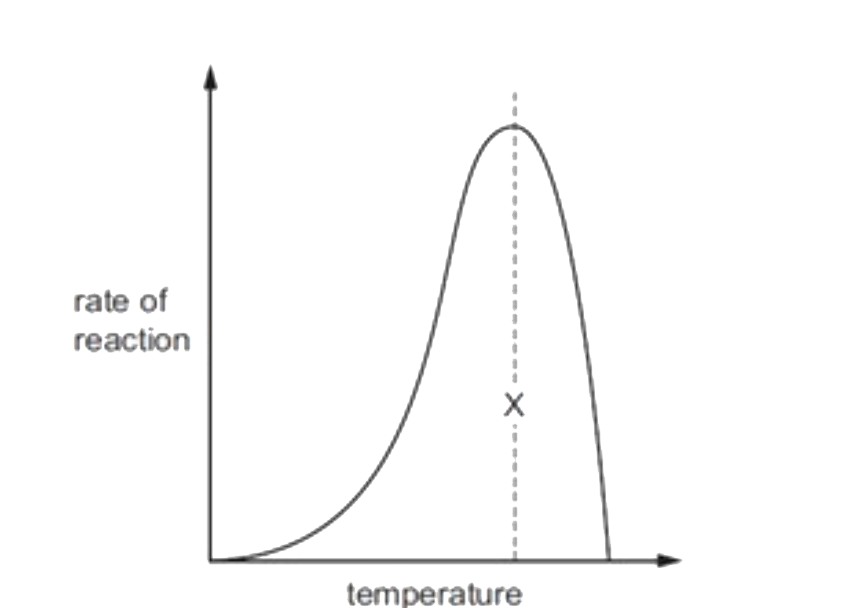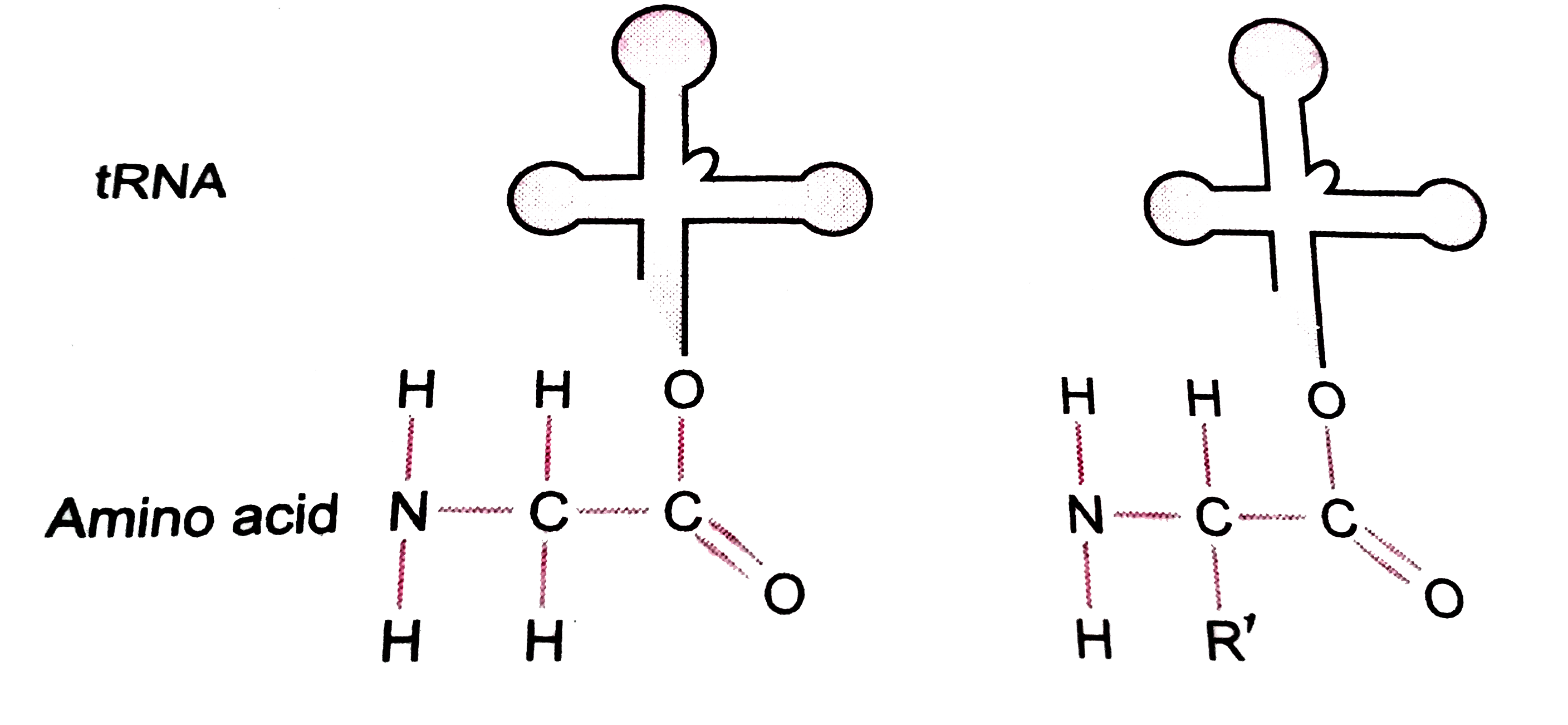A : The polypeptide coil of collagen helix is strengthened by the estabilishment of hydrogen bond between >NH-group of glycine residue of each strand with -CO group of other two strand.
R : In collagen helix locking effect also occurs with the help of proline and hydroxyproline amino acid.
If both Assertion & Reason are true and the reason is the correct explanation of the assertion, then mark (1).
If both Assertion & Reason are true but the reason is not the correct explanation of the assertion, then mark (2).
If Assertion is true statements but Reason is false, then mark (3).
If both Assertion and Reason are false statements, then mark (4)
The correct Answer is:B
Step by step video, text & image solution for A : The polypeptide coil of collagen helix is strengthened by the estabilishment of hydrogen bond between gtNH-group of glycine residue of each strand with -CO group of other two strand. R : In collagen helix locking effect also occurs with the help of proline and hydroxyproline amino acid. by Biology experts to help you in doubts & scoring excellent marks in Class 12 exams.
Topper's Solved these Questions
- BOOK - AAKASH INSTITUTECHAPTER - BIOMOLECULESEXERCISE - ASSIGNMENT (SECTION-C) Questions asked Prior to Medical Ent. Exams. 20551videos
BIOMOLECULES
- BOOK - AAKASH INSTITUTECHAPTER - BIOLOGICAL CLASSIFICATIONEXERCISE - Assignment (Section-D) Assertion - Reason Type Questions15videos
BIOLOGICAL CLASSIFICATION
- BOOK - AAKASH INSTITUTECHAPTER - BIOTECHNOLOGY AND ITS APPLICATIONSEXERCISE - ASSIGNMENT (SECTION - D) (ASSERTION - REASON TYPE QUESTIONS)10videos
BIOTECHNOLOGY AND ITS APPLICATIONS
Similar Questions
The graph shows the effect of temperature on the rate at which the enzyme in a biological washing powder digests and removes fruit juice stains .

Which statements explain the shape of the graph at temperatures higher than X ?
I. Bonds are broken between the R groups of the amino acids in the polypeptide chains of the enzyme.
II. There are more collisions between the enzyme and its substrate.
III. The tertiary structure of the enzyme is altered.
Iv. The shapes of the active site and the substrate are no longer complementary .View SolutionThe carboxyl group (-COOH) of one amino acid reacts with an amino group (−NH2) of other amino acid to form a peptide bond (-CO-NH). Make a peptide bond between the two amino acids by removing water molecule in the given figure
 View Solution
View Solution
Knowledge Check
- Question 1 - Select One
In α-helix secondary structure, hydrogen bonds lie between amide group of one amino acid and carbonyl group of
A2nd amino acidB3rd amino acidC4th amino acidD5th amino acid - Question 2 - Select One
From the following, the statement /s that will help to determine the specificity of an enzyme is /are:
I. The bonding between R groups of amino acids of the polypeptide
II. The optimum pH of the enzyme
III. The peptide bonds between amino acids of the polypeptide
IV. The shape of the substrate moleculeAI,II,III and IVBI and III onlyCI onlyDII,III and IV only - Question 3 - Select One
Read the passage given below and answer the following questions:
The transition metals when exposed to oxygen at low and intermediate temperatures form thin, protective oxide films of up to some thousands of Angstroms in thickness. Transition metal oxides lie between the extremes of ionic and covalent binary compounds formed by elements from the left or right side of the periodic table. They range from metallic to semiconducting and deviate by both large and small degrees from stoichiometry. Since d-electron bonding levels are involved, the cations-exist in various valence states and hence give rise to a large number of oxides. The crystal structures are often classified by considering a cubic or hexagonal close-packed lattice of one set of ions with the other set of ions filling the octahedral or tetrahedral interstices. The actual oxide structures, however, generally show departures from such regular arrays due in part to distortions caused by packing of ions of different size and to ligand field effects. These distortions depend not only on the number of d-electrons but also on the valence and the position of the transition metal in a period or group.
Assertion (A): CrO crystallises in a hexagonal close packed array of oxide ions with two out of every three octahedral holes occupied by chromium ions.
Reason (R): Transition metal oxide may be hexagonal close-packed lattice of oxide ions with metal ions filling the octahedral voids.AAssertion and reason both are correct statements and reason is correct explanation for assertion.BAssertion and reason both are correct statements but reason is not correct explanation for assertion.CAssertion is correct statement but reason is wrong statement.DAssertion is wrong statement but reason is correct statement.
Assertion: The two strands in double strand helix structure of DNA are complementary to each other
Reason: Disulphide bonds are formed between SQPecific pairs of basesView SolutionRead the below Statements about the structure of genetic material and identify the correct ones.
I. Adenine and guanine are bases that have a double ring structure , cytosine, thymine and uracil are based with a single ring structure .
II. An adenine nucleotide from DNA is the same as an adenine nucleotide from RNA , DNA adenine pairs with uracil and RNA adenine pairs with thymine.
III. The base pairing that occurs in a double DNA helix and when RNA is synthesised during transcription follows the rule that a purine pairs with a pyrimidine.
IV. The two Polynucleotides on a DNA molecule run in opposite directions so that the double helix formed has two strands that are parallel to each other.View Solutionα- Amino acids are the building blocks of proteins. About 20 α-amino acids have been isolated by the hydrolysis of proteins. All these amino acids except glycine are chiral and have L-configuration. Ten amino acids (valine , leucine, isoleucine , phenylalanine, methionine , trytophan , threonine , lysine , arginine and histidine) which the body cannot synthesize are called essential amino acids. The remaining ten are called non -essential amino acids. All α-amino acids exist are zwitterions each of which has a specific isoelectric point. Above isoelectric point , a α-amino acid exists as an anion. Two, three or many α-amino acids join together to form di-,tri -or polypeptides or proteins respectively. Each polypeptides or protein has a free amino group at one end called the N-terminal end and a free carboxyl group at the other end called the C-terimal end. Sanger's reagent (i.e., 2,4-dinitrofluorobenzene) is used to determine the N-terminal end while C-terimal end is determined by hydrazinolysis.
Which of the following reagents is used to determine the C-terminal end in a polypeptide ?View Solutionα- Amino acids are the building blocks of proteins. About 20 α-amino acids have been isolated by the hydrolysis of proteins. All these amino acids except glycine are chiral and have L-configuration. Ten amino acids (valine , leucine, isoleucine , phenylalanine, methionine , trytophan , threonine , lysine , arginine and histidine) which the body cannot synthesize are called essential amino acids. The remaining ten are called non -essential amino acids. All α-amino acids exist are zwitterions each of which has a specific isoelectric point. Above isoelectric point , a α-amino acid exists as an anion. Two, three or many α-amino acids join together to form di-,tri -or polypeptides or proteins respectively. Each polypeptides or protein has a free amino group at one end called the N-terminal end and a free carboxyl group at the other end called the C-terimal end. Sanger's reagent (i.e., 2,4-dinitrofluorobenzene) is used to determine the N-terminal end while C-terimal end is determined by hydrazinolysis.
An α-amino below its isoelectric point exists asView Solutionα- Amino acids are the building blocks of proteins. About 20 α-amino acids have been isolated by the hydrolysis of proteins. All these amino acids except glycine are chiral and have L-configuration. Ten amino acids (valine , leucine, isoleucine , phenylalanine, methionine , trytophan , threonine , lysine , arginine and histidine) which the body cannot synthesize are called essential amino acids. The remaining ten are called non -essential amino acids. All α-amino acids exist are zwitterions each of which has a specific isoelectric point. Above isoelectric point , a α-amino acid exists as an anion. Two, three or many α-amino acids join together to form di-,tri -or polypeptides or proteins respectively. Each polypeptides or protein has a free amino group at one end called the N-terminal end and a free carboxyl group at the other end called the C-terimal end. Sanger's reagent (i.e., 2,4-dinitrofluorobenzene) is used to determine the N-terminal end while C-terimal end is determined by hydrazinolysis.
The acid showing salt-like character in aqueous solution isView Solution
